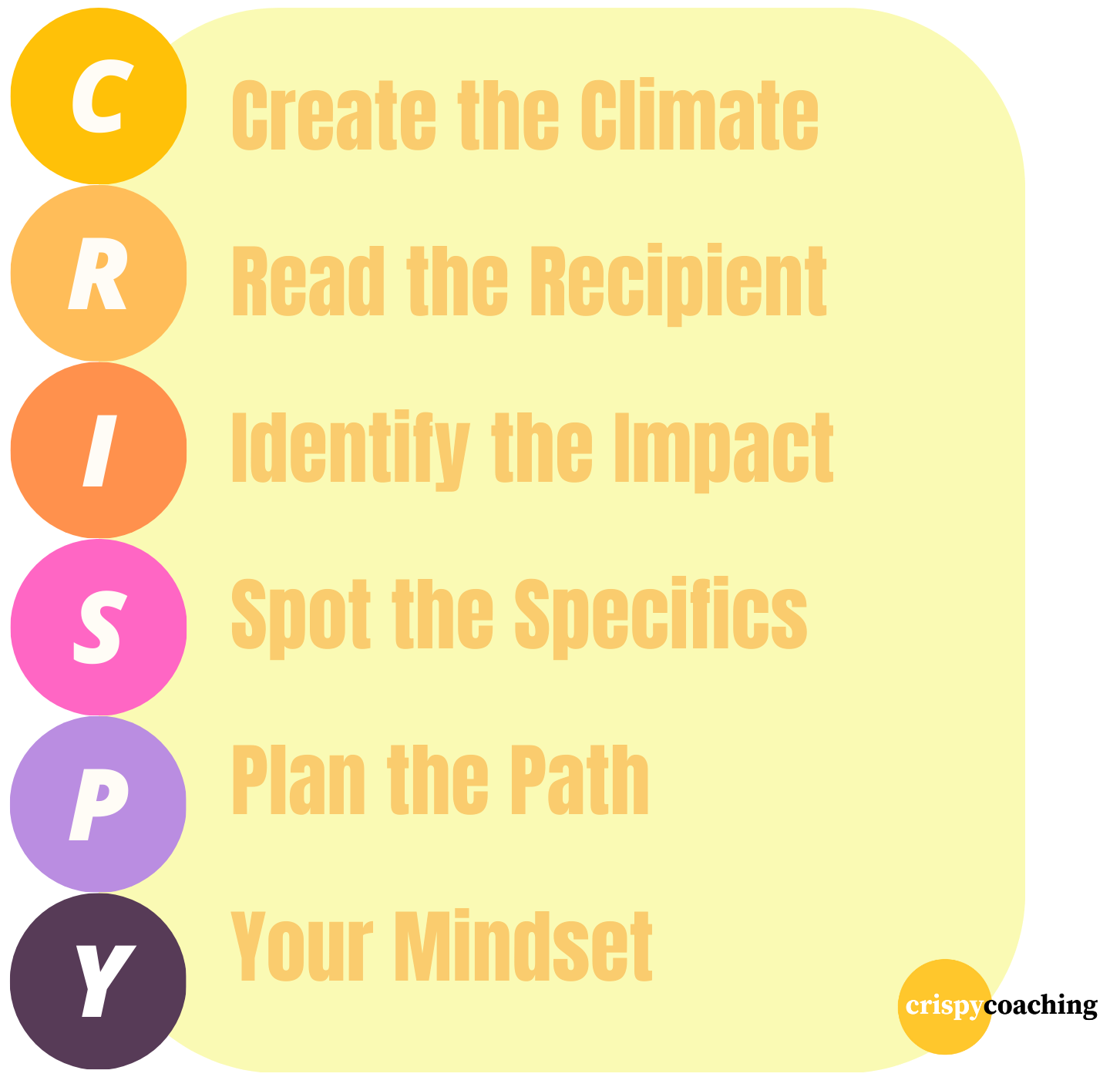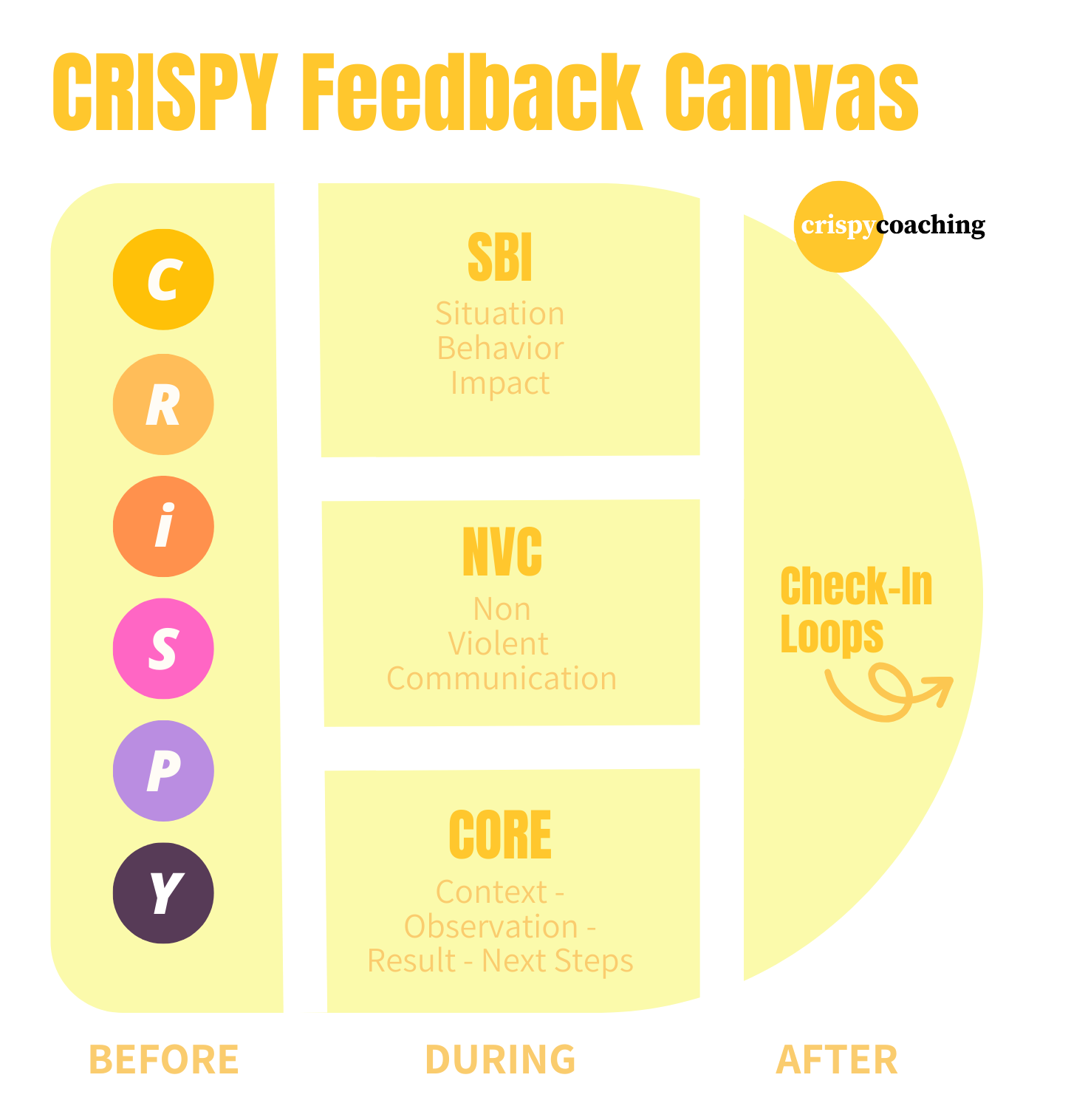Feedback as the Core of People-Centered Leadership
People-centered leadership focuses on the transformation of individuals, teams, and entire organizations. The focus isn’t on mere transactions, but on development and growth. The whole is more than the sum of its parts – which is why it’s so important to value each individual’s development.
How do people learn best?
Through trial and error, through experience – supported by self-reflection and external feedback. That’s why the main task of people-centered leaders is to truly see their employees and support their development through feedback.
This means many things: focusing on growth instead of just getting tasks done, creating psychological safety rather than punishing ideas and mistakes, and fostering strong teams rather than lone warriors.
Good Feedback Doesn’t “Just Happen Along the Way”
People-centered leadership also means understanding feedback as a core tool. And for that to work, feedback needs to be designed as intentionally as you’d plan a project or develop a product strategy.
“Just giving feedback along the way” too often results in feedback being unnecessarily hurtful, too late, too rare, too vague, or one-sided – in the sense of “I talk, you listen.”
Good Feedback Goes Beyond the First Sentence
Many common feedback models help with crafting a single sentence – but leave us hanging when it comes to preparation and follow-up. Yet those phases are critical for the impact.
That’s why at **crispycoaching**, we’ve combined well-known models with our own approach. Our goal: to support you in preparation, execution, and follow-up so your feedback has lasting impact.
What Makes Feedback Good?
We put our heads together, brought in our experience and knowledge about feedback, and asked ourselves: What’s at the heart of truly good feedback?
Our answer: Good feedback sparks a productive reaction in the recipient.
Productive doesn’t necessarily mean immediate agreement. But the person doesn’t go into defense mode – instead, they join you in exploring what’s behind the situation, with the goal of finding a workable way forward.
So How Do I Get There?
We developed guiding principles to support your preparation:

Depending on how big or sensitive the feedback topic is, you’ll need more or less time for these steps. For quick praise, 10 seconds of prep might be enough. For complex or sensitive feedback, it might be worth spending an hour – and we promise that’s time well spent that can save you (and the other person) a lot of trouble.
Climate – When and Where Do I Give Feedback?
Timing and setting can make a huge difference. If I give detailed criticism right after an emotionally charged client meeting, a defensive reaction is very likely. If I call someone into my office and deliver feedback from behind a big desk, the roles are clear: I’m the boss, you’re the subordinate. Not great conditions for a productive exchange.
Rules of thumb:
- For positive feedback: as close to the event as possible, as publicly as appropriate
- For critical feedback: as close to the event as possible – but with enough distance for emotions to cool – and as privately as necessary
Recipient – Who Am I Giving Feedback To?
Thinking ahead about who you’re giving feedback to and what they need to respond productively increases your chances of a good conversation.
Rules of thumb:
- The more confident the person, the more direct you can be
- The less trust between you, the more carefully and precisely you should phrase things
- If the person is unsure about their future on the team, critical feedback feels much more threatening
- Almost every behavior reflects some kind of strength – try to find the positive intent
Impact – What Do I Want My Feedback to Achieve?
This has two sides: first, consider the effect of the current behavior – positive or negative. Second, get clear on what you want your feedback to achieve.
Do you want to praise? Spark self-reflection? Encourage behavior change – or reinforce current behavior? Offer your perspective – or build a shared one?
Be clear about this beforehand. If the conversation becomes more dynamic than expected, knowing your goal helps you stay on track.
Rules of thumb:
- Know whether you’re aiming to praise, stabilize, or change behavior
- Name the impact – not just your judgment
- Avoid “good” or “bad” – describe the consequences
- Ask yourself: Will my goal lead to reflection or resistance?
Specifics – What Observations and Examples Do I Have?
Everyone has received feedback that was just a vague conclusion: “You need to be more present.” Without concrete examples, this becomes an empty phrase at best – or leads to frustration at worst: “When exactly wasn’t I present? And what do you mean by ‘presence’?”
Preparing clear examples means two things:
1. Jot down key observations during or right after they happen.
2. Before the conversation, choose the examples that best support your point.
Rules of thumb:
- Avoid generalizations like “always” or “never” – focus on specific situations
- Stick to observable behavior, not interpretations (“you interrupted” instead of “you were disrespectful”)
- Take brief notes immediately after relevant events
- Choose 1–2 strong examples – quality over quantity
Path Forward – What Are the Next Steps?
Before giving feedback, think about potential next steps. Sometimes “don’t do that anymore” might suffice, but often more is needed.
Stay flexible: the other person may have their own ideas. Also, you often need to agree on the problem before jumping to solutions. Remember: the recipient hasn’t had as much time to reflect on the issue as you have.
Also, consider who is responsible for making changes. New managers often take on too much of the burden, which can shift their role from support to babysitting.
Rules of thumb:
- Think of 1–2 concrete next steps – but stay open to suggestions
- Balance responsibilities: Who does what?
- Start small: better to take a realistic first step than propose an overambitious plan
- Ask: “What do you need to take that step successfully?”
Your Mindset – What’s My Attitude Going In?
Check in with yourself before the conversation: How are you feeling? Angry, frustrated, disappointed? The other person will likely pick up on this, which can trigger defensiveness.
And what’s your stance? Do you want to “win” the conversation? Convince the other person at all costs? That likely turns the talk into a monologue.
As hard as it may be: approach the other person with goodwill. That increases the chance of a productive response.
Also remember: your version of the story isn’t the whole truth. The other person has their own perspective – and at minimum, you should hear and understand it.
Rules of thumb:
- Check your emotions: If you’re angry, hurt, or frustrated – wait
- Clarify your stance: Do you want to be right or build connection?
- Acknowledge your view is one perspective – not the absolute truth
- Go into the conversation thinking: “I want to understand, not judge”
The CRISPY Feedback Canvas – A Structure for the Whole Feedback Journey
To guide you beyond the structure of the conversation itself, we developed the CRISPY Feedback Canvas. It supports you through all three phases of an effective feedback process: Before, During, and After.
In the BEFORE phase, use the CRISPY guide you just learned.
During the DURING phase, apply one of these proven models, depending on the situation:
- SBI (Situation – Behavior – Impact): For short, clear feedback based on observable behavior
- NVC (Nonviolent Communication): For sensitive or conflict-heavy conversations – helps reach others emotionally
- CORE (Context – Observation – Result – Next Steps): For broader or developmental feedback – great for more complex issues
In the AFTER phase, use Check-in Loops to ensure follow-up. Because feedback’s real impact shows up not in the moment, but in the behavior that follows. A genuine check-in two weeks later (“How’s it going with that topic?”) shows that you’re committed – and staying engaged.

Curious?
Want to dive deeper into the topic? Practice in a safe space? Wondering how to apply these principles in your own context?
Then we’d love to see you at our Communication & Feedback Training 🙂







